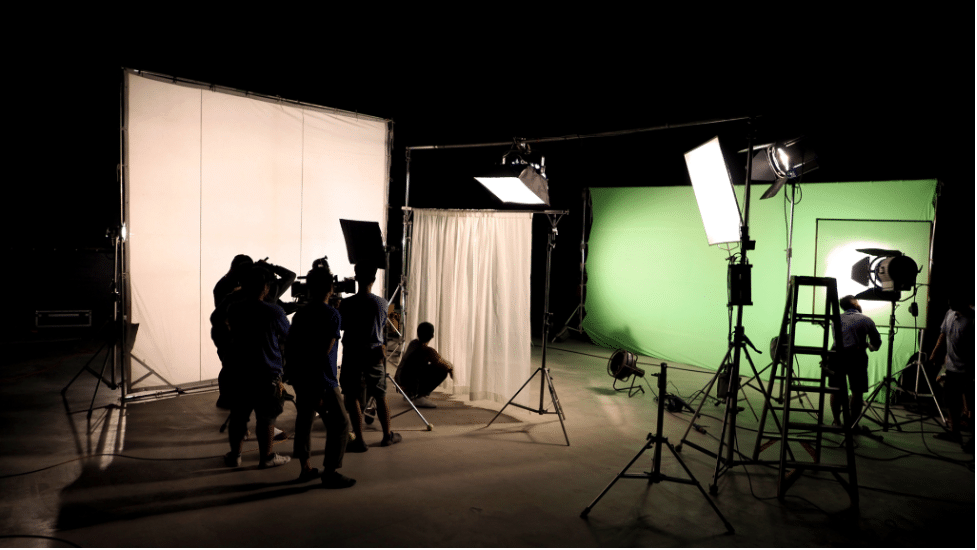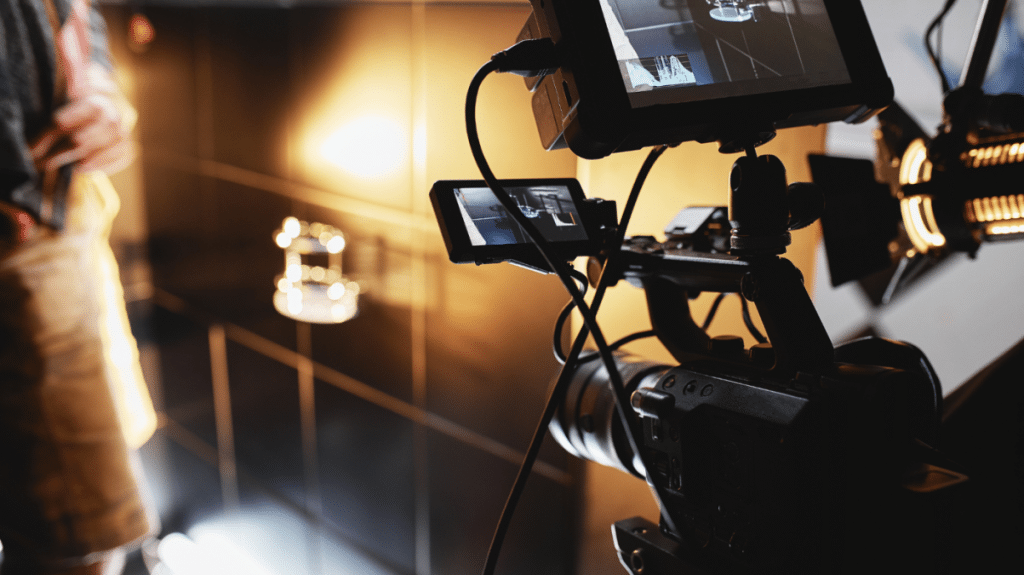Behind every successful video production is a team of skilled professionals who bring their unique talents to each stage of the process.
From the early planning and creative development to on-set execution and post-production refinement, these roles work together to create a seamless and captivating final product.
We talked with the Blare Media Crew, and put everything together in this guide highlighting the key players and their contributions to the production journey.
Pre-Production
Producer: The Mastermind
In video production for video content, the producer is pivotal, overseeing the entire process by balancing creative vision with financial and logistical considerations. They manage hiring, budgets, and timelines to ensure the project stays on schedule and within budget.
This involves coordinating various departments, securing necessary resources, and maintaining clear communication among all team members. By effectively handling these responsibilities, the producer ensures a seamless production process, allowing the creative aspects to flourish within the established constraints.
Director: The Visionary
In film production, the director is responsible for the project’s overall vision and execution. They make creative decisions, direct actors’ performances, and collaborate with all team members to ensure a unified creative vision.
This involves interpreting the script, guiding the technical crew, and overseeing the artistic aspects of the film. By effectively managing these elements, the director ensures that the final product aligns with their envisioned narrative and aesthetic.
First Assistant Director (1st AD): The Organizer
The first assistant director (1st AD) plays a critical role in managing the shooting schedule and coordinating logistics to ensure all necessary footage is captured efficiently.
By handling organizational duties, particularly in larger productions, the 1st AD supports the director, enabling them to focus on the creative aspects. This position ensures the production runs smoothly by maintaining clear communication across departments and keeping the team on track.
Scriptwriter: The Wordsmith
The scriptwriter lays the foundation for the entire production by crafting the script that shapes the narrative. They provide the dialogue and storyline that serve as the blueprint for the actors’ performances and the director’s vision.
Through their work, the scriptwriter establishes the tone, structure, and emotional core of the project, which the entire team brings to life.
Location Manager: The Scout
The location manager identifies and secures filming locations that align with the project’s vision. They handle necessary permissions and serve as a liaison between the crew and local authorities, building crucial relationships to ensure smooth operations on-site.
Casting Director: The Talent Hunter
The casting director is responsible for finding actors to bring the script to life, often organizing and conducting auditions. They collaborate closely with the director to select the most suitable talent for each role, ensuring the characters are portrayed authentically and effectively.
Set Designer: The Scene Shaper
The set designer creates environments that align with the intended tone of the production, ensuring every element supports the story’s visual and emotional goals.
Collaborating with the director and production designer, they bring the film’s aesthetic to life, crafting spaces that enhance the narrative and immerse the audience.
Wardrobe Stylist: The Style Architect
The wardrobe stylist selects and prepares attire that aligns with the video’s tone and context, dressing the talent to enhance the story’s visual narrative.
Collaborating closely with the costume designer, they create outfits that reflect the characters and contribute to the overall aesthetic of the production.
Hair and Makeup Artist: The Glam Wizard
The hair and makeup artist manages the on-screen talent’s appearance, ensuring they look their best on camera.
They maintain consistency in the actors’ looks, aligning their appearance with the character and scene requirements to support the story’s authenticity and visual coherence.

Production
Director of Photography (DP) / Cinematographer: The Light Painter
The director of photography, or cinematographer, collaborates closely with the director to shape the visual style of the project. They focus on composition, lighting, and camera movement, ensuring each shot aligns with the creative vision.
By capturing the visual elements that bring the story to life, the cinematographer transforms ideas into striking imagery that defines the production’s aesthetic.
Digital Imaging Technician (DIT): The Media Guardian
The digital imaging technician (DIT) is responsible for managing the physical media that stores video and audio from the shoot. They ensure memory cards are always ready for use and that all footage is backed up securely.
By maintaining the integrity and organization of the media, the DIT plays a crucial role in safeguarding the production’s visual and audio assets.
Camera Operator: The Frame Catcher
The camera operator brings the creative vision to life by operating the camera during shooting and capturing scenes with precision.
Working closely with the director and director of photography, they ensure that each shot aligns with the intended style and storytelling goals. Their expertise in framing and movement is essential to translating ideas into dynamic visuals.
Gaffer: The Light Maestro
The gaffer plays a vital role in executing the lighting plan by leading the lighting crew and serving as the head electrician on set.
They work closely with the lighting director to ensure the setup aligns with the desired visual aesthetic, providing the necessary illumination to bring each scene to life effectively and creatively.
Key Grip: The Rigging Guru
The key grip collaborates with the gaffer to set up and position lighting equipment and accessories, such as flags and diffusers, to achieve the desired effects. They also handle rigging and ensure all equipment is safely and securely positioned, playing a crucial role in creating the technical foundation for each shot.
Audio Technician / Sound Designer: The Sound Whisperer
The audio technician ensures high-quality sound by capturing and monitoring on-set audio, making adjustments to levels as needed.
Beyond recording, they contribute to developing the overall audio landscape, incorporating dialogue, sound effects, and music to create an immersive experience that enhances the production’s impact.
Production Assistant (PA): The Swiss Army Knife
The production assistant is a versatile team member, providing support across various departments as needed.
Their tasks can include transporting equipment, taking notes for the producer, or handling other essential duties that help keep the production running smoothly and efficiently.
Post-Production
Editor: The Narrative Weaver
The editor transforms raw footage with tools like Flutter into a cohesive and compelling narrative during post-production.
By working closely with the director, they fine-tune the pacing and storytelling to align with the creative vision, ensuring the final product captures the intended emotion and impact.
Visual Effects (VFX) Artist: The Magic Maker
The visual effects artist enhances the production by creating elements that are either impractical or impossible to capture live.
They add features like realistic landscapes or dramatic effects, seamlessly integrating them into the footage to elevate the overall visual experience.
Is such a big team always required for video production shoot?
No, such a big team is not always required for a video production shoot. The size of the team depends on the project’s scope, budget, and complexity. For small projects like social media content, corporate videos, explainer videos or indie films, a lean crew with overlapping roles can efficiently handle the production.
In these cases, one person might manage multiple responsibilities, such as a director also handling the camera or a producer doubling as the script supervisor. However, for larger productions with complex scenes, high-end visuals, or tight schedules, having a specialized team ensures higher quality, efficiency, and creative focus.
